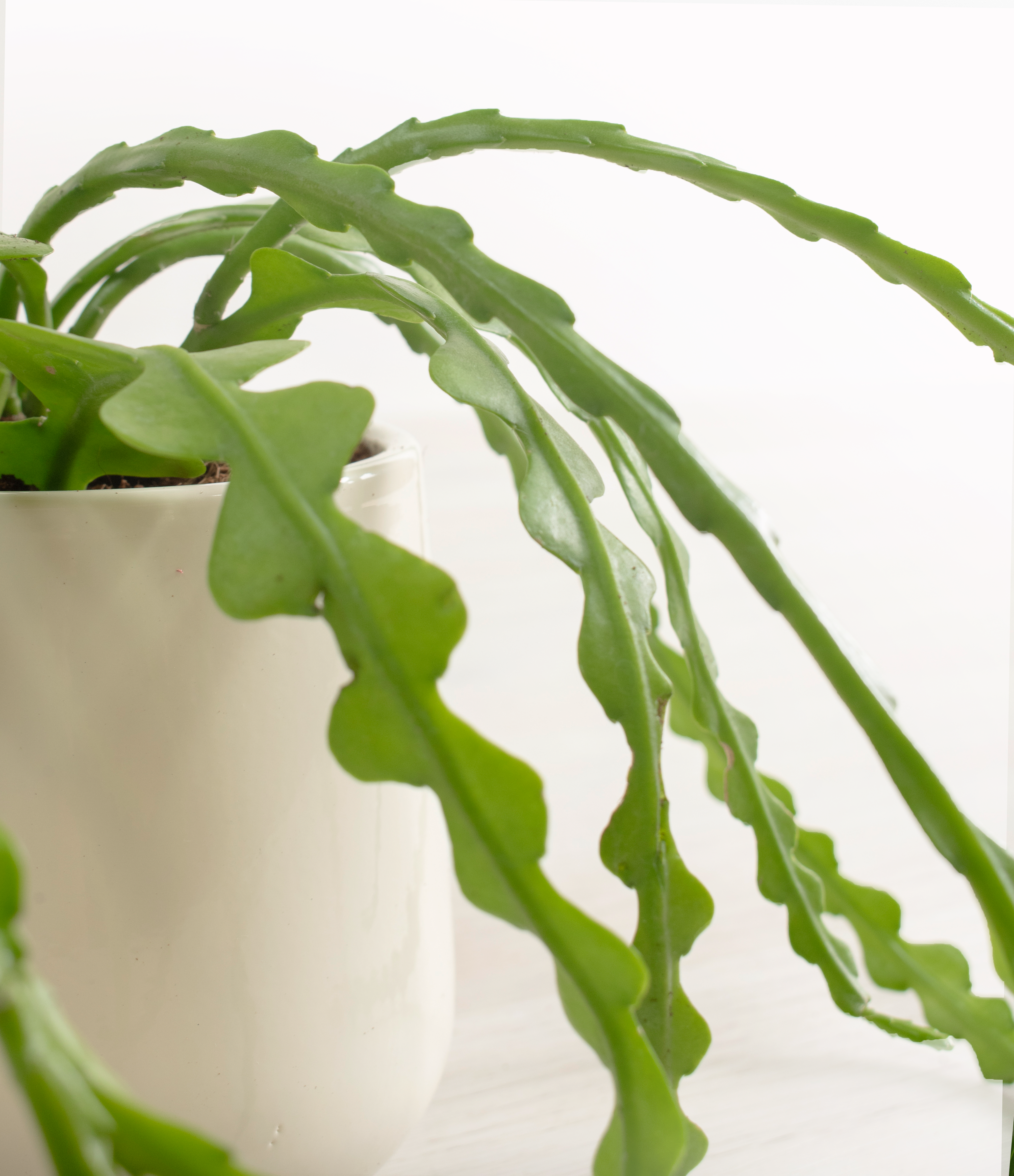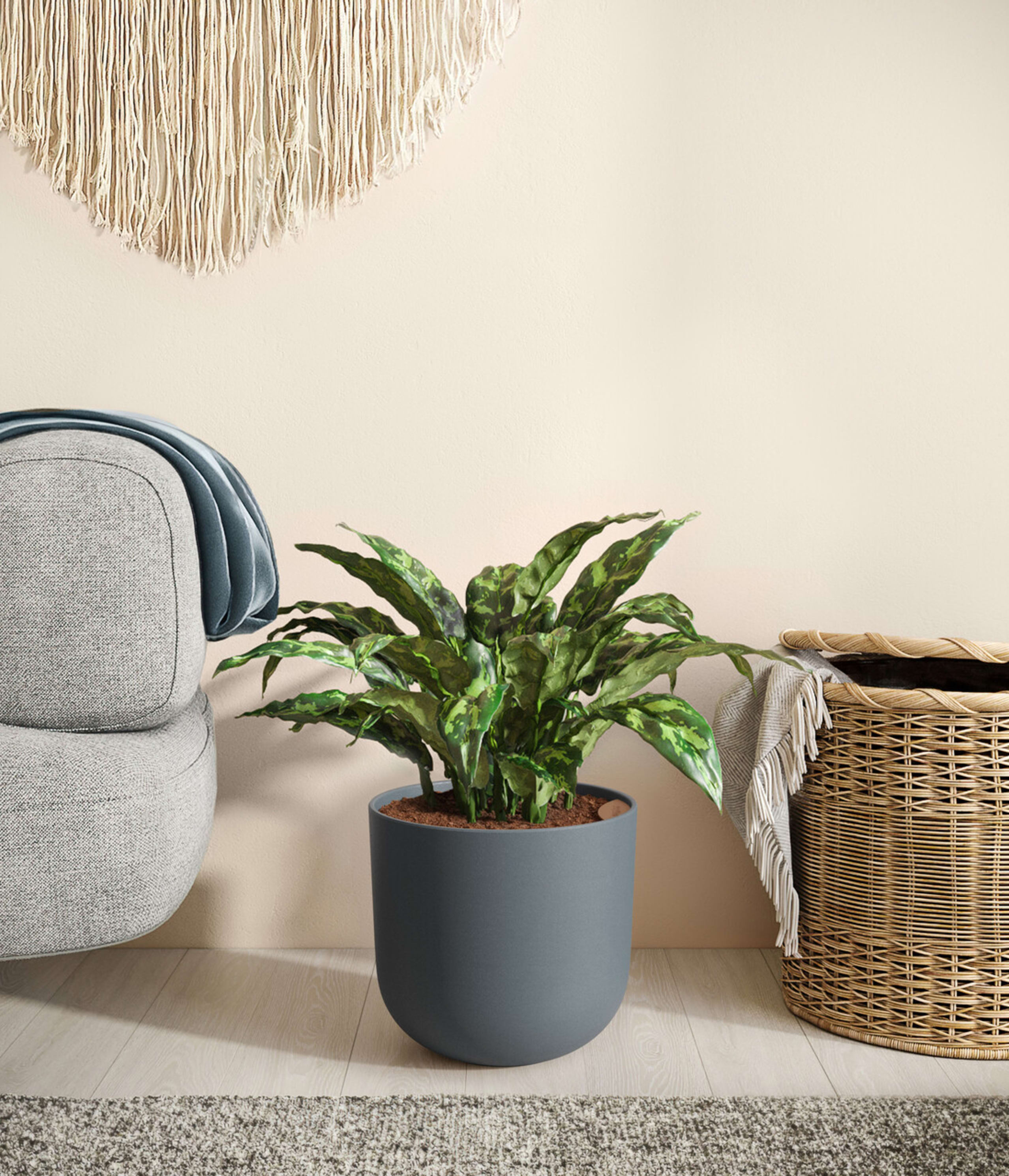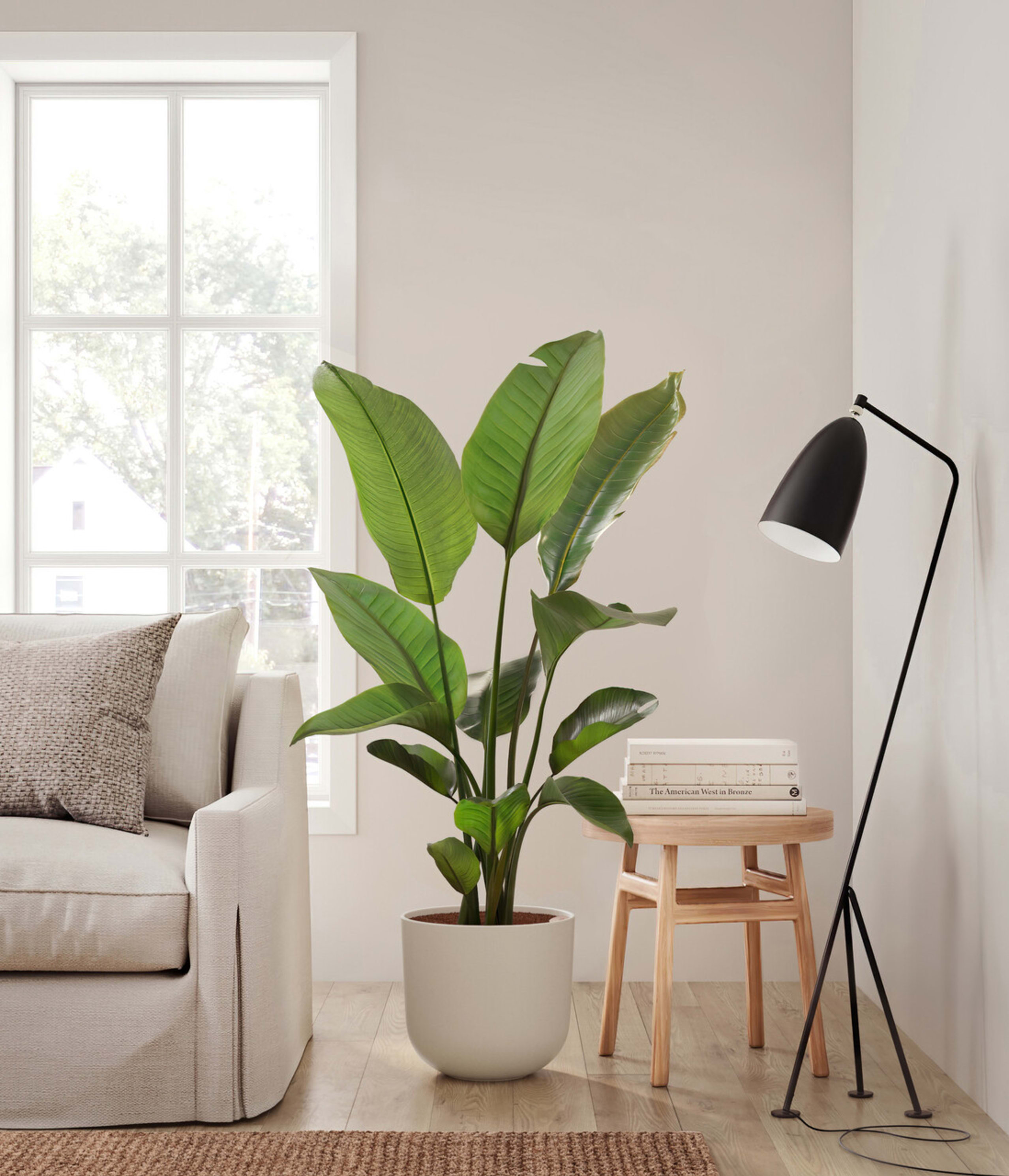Plant care library / Fishbone Cactus
Fishbone Cactus Care
About Fishbone Cactus
Unlike its desert-dwelling counterparts, the fishbone cactus hails from Mexico and is tailor-made for those looking to liven up humid climates with a tropical touch. With no need for direct sunlight, this epiphytic species lives well in both bright or shaded corners of your home - perfect if you're short on space!
The gorgeous fishbone cactus is an ideal houseplant, requiring minimal maintenance and growing robustly in indirect light. Unlike many other plants, it doesn't need a lot of soil to develop healthily; instead, its epiphytic properties allow it to grow easily from tree branches or similar surfaces - much like what occurs naturally in the jungles of Mexico. With proper humidity levels maintained at all times, this amazing plant will thrive indoors for years.
Other common names
- Disocactus anguliger
- Zig zag cactus
- Ric Rac cactus
- Orchid cactus
How Often Should I Water My Fishbone Cactus
With easyplant, watering your Fishbone Cactus is simple. Make sure to fill the easyplant reservoir once a month, and you're all set!
If you don’t have an easyplant, check your fishbone cactus plant soil regularly and adjust the watering frequency as needed. In the summer months, water your plant when the top couple of centimeters are dry - usually once a week or two. Make sure to always water at the sink or bathtub and let all excess liquid drain away before placing it back in its decorative pot. During wintertime, you'll need to give it less frequent watering sessions; every 2-3 weeks should suffice!
Fishbone Cactus Light Needs
Fishbone Cactus grows best in a space with bright indirect light, where the sun rays are diffused. Avoid placing it in spaces with low light, direct sunlight or spaces without natural light.
To ensure vibrant color and abundant growth, it's paramount that your fishbone cactus receives semi-bright indirect light for a few hours daily. Though It can tolerate a few hours of direct sun or a bit less intense lighting, a west or east-facing window is optimal; however, if this isn't available, the sun can be diffused with sheer curtains to provide suitable lighting from further away.
Just make sure you avoid locations where direct sunlight may hit your plant, as this will cause leaves to bleach out and become pale. Light is an essential determining factor for the health and potential flowering of your cactus and should be monitored at all times.
Fishbone Cactus Plant Care
Rotating your Fishbone Cactus around 1/4 turn monthly will help it receive equal amounts of light from all sides and keep a consistent growth. You should also occasionally dust off the leaves with a damp cloth to prevent any build-up of dust or other dirt, which can lead to plant health issues.
Remember that direct sunlight, over-watering, and cold temperatures can all have negative effects on your Fishbone Cactus. Keep it in a warm and bright spot, such as near a west or east-facing window, to give it the best chance of survival. With proper maintenance, you'll be able to enjoy this beautiful and rare plant for years!
How Big Do Fishbone Cactus Plants Grow?
With intriguingly branched stems ranging from 8" to 12", the Fishbone Cactus is visually stunning and a rare specimen for its night time flowering habit. With proper conditions, Fishbone Cacti can grow to their full potential in just a few years.
After it reaches maturity at three years old, these eye-catching flowers open up during springtime. This plant usually grows slowly and requires patience before you can enjoy the full height (and flowering) of your cactus.
To make your Fishbone Cactus appear fuller, cuttings provide an excellent option. Aim to create each cutting at 3-4 inches long; no need to extend the length as more cuttings will contribute to a healthier plant! After you've created your slices, dry them out and wait for their callous-over period before propagation.
Temperature & Humidity
Perfectly suited for a home environment, the fishbone cactus requires warm temperatures ranging from 60-77 degrees Fahrenheit in summer and can survive temperature drops to around 50 degrees during winter. With its unique appearance, this cactus species makes an attractive addition as a houseplant.
Requiring a humid environment to flourish, the fishbone cactus is native to jungle habitats and thrives in warm climates with 60% or higher humidity levels. Investing in a humidifier or pebble tray filled with water and placed under the pot is a great way to ensure your cactus receives enough moisture.
Are Fishbone Cactus Toxic for Pets & Kids?
Fishbone cacti are non-toxic, so they will be safe around pets and children. Not only is it non-toxic, but the fruit of this unique cactus is edible. Additionally, it is a spineless type of cactus, making it perfect for homes with curious children and pets.
Troubleshooting Common Problems with Fishbone Cactus
Fishbone cacti are relatively easy to maintain and rarely encounter issues as long as they're not overwatered or exposed to too much sun. To prevent any watering issues, investing in an easyplant self-watering system is a great way to ensure your cactus never goes without proper hydration.
If your Fishbone Cactus does start to look limp or experience leaf drop, this may be an indication of root rot due to overwatering. To fix this issue, you should remove the plant from its pot and check for root rot. Cut away any brown or mushy roots and repot them in well-draining soil with a new pot.
Mealybugs can occasionally pop up on the leaves of your plant. These small, fuzzy white critters require careful monitoring so that you can catch them early before any serious damage is done.To identify them, look for white, cottony masses on stems, leaves, and branches, or small, crawling insects with segmented bodies. To treat them, wipe them off with a damp cloth, spray with a mixture of water and dish soap, or use neem oil as a natural solution.
Frequently Asked Questions about Fishbone Cactus Plant
- Are Fishbone Cactus pet-safe?Yes, the Fishbone Cactus is non-toxic and perfectly safe to keep around pets and children. As a spineless, non-toxic plant, it is a great choice for homes with curious kids and pets. Plus, its unique appearance makes it an attractive addition to any home decor.
- Are Fishbone Cactus rare?The Fishbone Cactus is a somewhat rare plant and is native to jungle habitats in Mexico and Central America. It is not commonly seen in nurseries or home gardens, so it makes an attractive addition as a houseplant.
- How do you take care of a Fishbone Cactus?Fishbone Cactus are relatively easy to take care of and require minimal maintenance. Keep it in a warm and bright spot, such as near a west or east-facing window, water when the top couple of centimeters are dry - usually once a week - and rotate the pot 1/4 turn monthly for even growth.
- Is Fishbone Cactus indoor or outdoor?If you're lucky enough to reside in a warm, sunny climate, you'll be able to enjoy the benefits of growing it outdoors year-round. But if temperatures dip below 40°F in your area, it is best to keep this rare cactus and an indoor houseplant.

 Small Plants
Small Plants Medium Plants
Medium Plants Plants Collections
Plants Collections Large Plants
Large Plants Huge Plants
Huge Plants